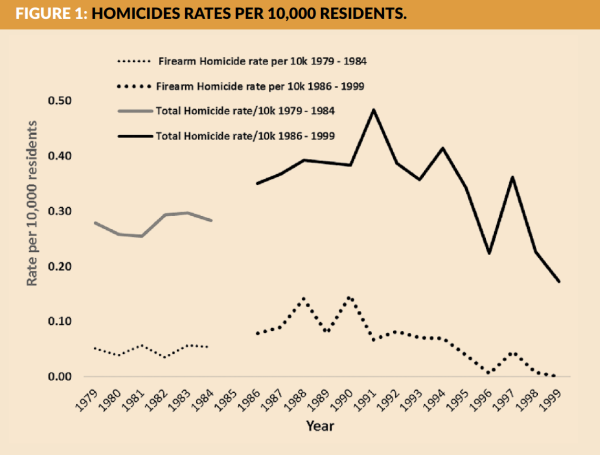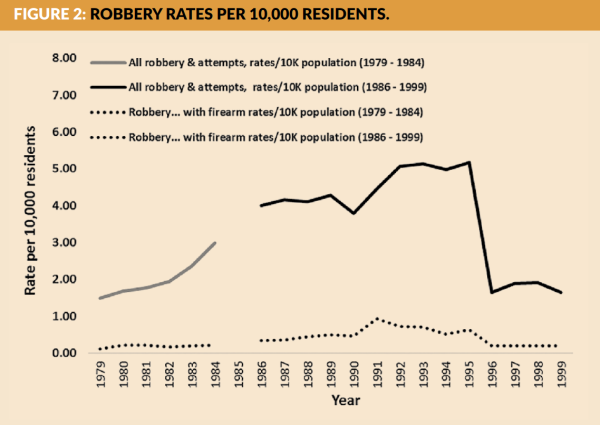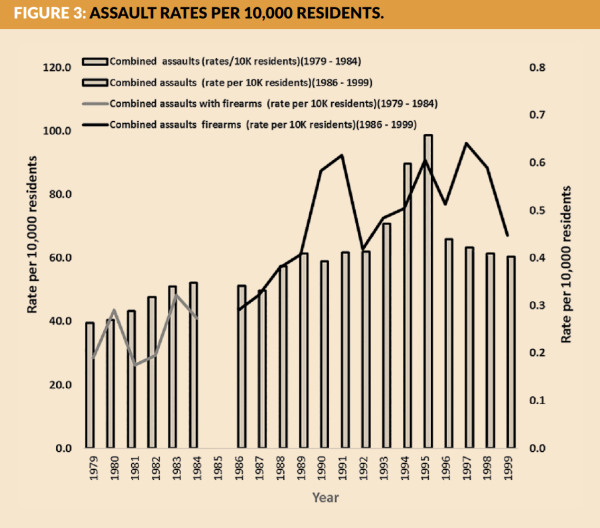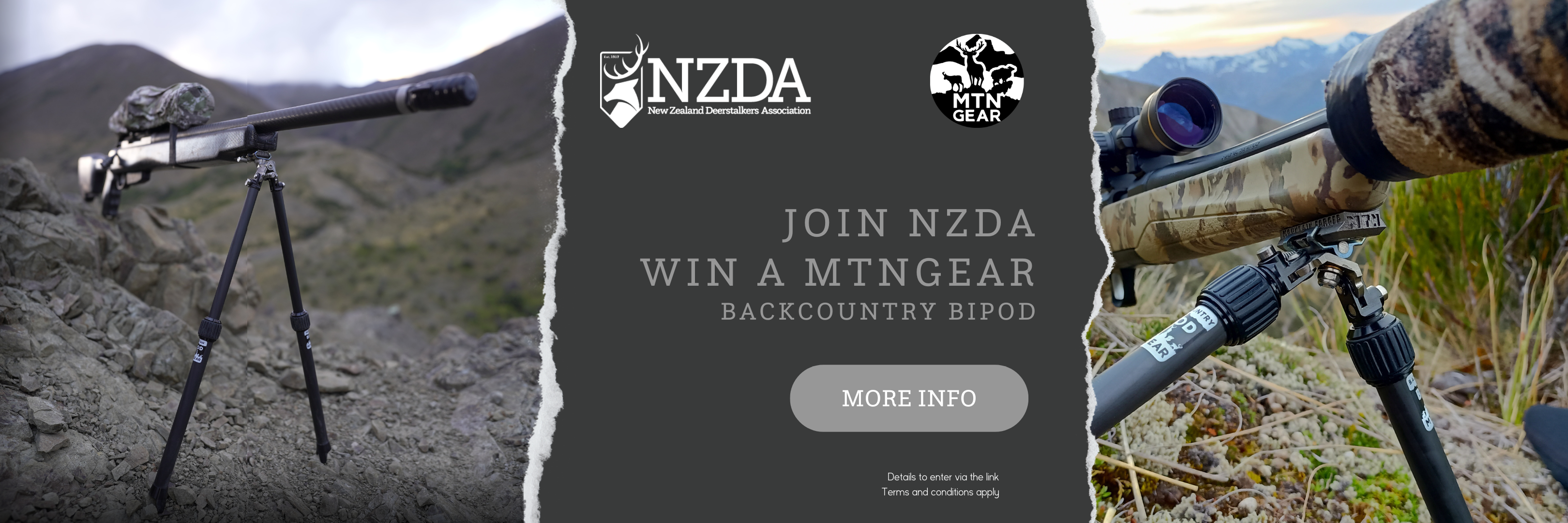Full Firearm Registration Is A Waste Of Public Money
4 January
Hunting and Wildlife Magazine - Issue 217 Winter
Words By: Chaz Forsyth
Introduction
The value of a registry is doubtful, both as a crime prevention entity as well as a crime solving tool. This has been submitted by the police on many occasions before the recent law changes, showing that the decision to embark upon a registry is political, not one based on pragmatism. The late Sir Thomas Thorp qualified his support for a firearm register by noting that “…unless a compliance rate of not less than 90 percent can be achieved, the benefits derived from registration would be significantly reduced” (Thorp, 1997, p. 184).
A presentation of 2008 briefly described the outcomes of overseas efforts at other forms of firearm control (which were also noted as failures in the sense of failing to achieve control of offending). These were restricting possession of certain types of firearms, compulsory buy-backs, centralised armouries and deactivating firearms (Green, 2008).
A recently published exposition supporting full firearm registration (FFR) stated that its purpose is expected to, “… strengthen the personal responsibility of firearm owners and to consequently reduce the availability of firearms to criminals and those not entitled to possess them” (Loan, 2019, p. 3). This suggests that full firearm registration (FFR) has values as a crime prevention as well as a crime solving tool.
Without firearm registration, what offending exists?
Offences which currently exist in law for illegally supplying or possessing firearms are:
(a) Possession of firearms by those not licenced for them is unlawful (Section 20, Arms Act, 1983, on pain of up to a year of imprisonment or to a $15,000 fine),
(b) The selling or supply of firearm or airgun to unlicensed person exposes them to imprisonment for up to 2 years, or to a fine of up to $20,000 (Section 43, Arms Act, 1983).
(c) Licensed firearm owners are required to observe six general conditions, which include meeting requirements for the secure storage of their firearms (Arms Act 1983, Section 24B; Section 19 Arms Regulations, 1992).
(d) Firearm owners were also required to report the loss or theft of any firearm, on pain of a fine of up to $500, but this measure has since been repealed, surprisingly.
(e) The offence of “…failing to produce firearm other than pistol, restricted weapon, or prohibited firearm on demand or to permit inspection of firearm” also carries on conviction, liability for a fine of up to $10,000 (Section 55C of the Arms Act, 1983).
Crime prevention potential of FFR
The police, in 1996, noted in their evidence-in-chief to the Thorp Review (1997) of firearms that,
“There is little evidence that universal registration provides any real benefits unless the system provides for regular checks every 2-3 years on the firearms held by every firearm owner…If regular checks are not done then the benefits of the initial checks made to implement the project quickly fall away and the system falls into disrepute” … It is considered that there are no significant gains to be made by introducing universal registration at this time” (New Zealand Police, 1996, pp. 2 and 3).
The police continued,
“3.6.7 Crime
There is little evidence that a registration system would be instrumental either in solving serious crime involving firearms or preventing them. The majority of firearms used in serious crime do not belong to the offender and are usually stolen, unlawfully in their possession or supplied by other than a licensed owner.
Offenders rarely leave firearms behind at scenes of crime. In the majority of cases the offender is located before the firearm is found” (New Zealand Police, 1996, Appendix A).
Proponents for this measure also overlook the fact that although registration of motor vehicles for road use is near-universal, more than 20,000 motor vehicles are stolen annually, some of which undoubtedly feature in reported offending (Otago Daily Times 30 April 2022). This is for a motor vehicle fleet of some 4.5 million vehicles. Compared to firearms (for which an estimated 1.2 million are in private ownership in New Zealand), the annual total reported stolen is approximately 1,000, testament surely to the greater security afforded these items?
The value of registration records
The utility of FFR will theoretically enable the tracking and tracing of all firearms within and beyond New Zealand (Thorp, 1997; Loan, 2019).
“Modern automation can be used to both collect information on firearms and licence holders and also place quality assurance and controls on the processes for purchasing and selling firearms. Practically, this means:
- The information on people and the firearms they possess can be linked and known in real time.
- The identities of firearms licence holders can be verified in real time.
- Identification of the firearms can be traced at the point of registration or purchase; and
- Any firearm can be tracked through its lifecycle, as can firearms licence-holders for the duration of licences” (New Zealand Police, 2019, p. 51).
Loan (2019), in his comprehensive presentation of the case for firearm registration, qualified his position by noting that registries had to be established and operated efficiently, noting that,
“…it is very difficult to isolate and quantify any direct correlation between the establishment of a firearm registration scheme and firearm-related deaths/injuries… because they have been implemented as part of a comprehensive… package of… measures” (op. cit., p, 4).
Although such a measure as FFR might contribute to a reduction in violence with firearms in New Zealand society, it is perhaps noteworthy that violence featuring firearms is, “…about 1.4% of all violent crime” (New Zealand Police, 2016, p. 5).
The Law-and-Order committee noted several issues relating to registration of firearms:
- “The cost of implementation and the time it would take
- “Lack of evidence that registration will result in a reduction of violence involving firearms”
- Difficulties with obtaining a high degree of compliance and accuracy
- The number of illegal firearms that would remain outside the system (including those in possession of the criminal community), which would significantly reduce the benefits of registration” (Law and Order Committee, 2017, pp. 15 & 16).
(This of course begs the question of what to do about the remaining 98.6% of offending which does not involve firearms).
The possibility of FFR being used to return stolen or lost firearms to their licensed owners might be an outcome for the registry, but in the normal course of events, a prudent owner would not only keep records of his/her firearms, but also ensure they remain securely locked away, the latter measure already being a legal requirement.
Efficacy of FFR
If FFR was effective, a dramatic upsurge in firearm-armed violence would have been expected after its abolition in 1983. No official ‘before and after’ study of offending is known to have been undertaken since the abolition of rifle registration in 1983. Shotguns have not been registered since the early 1930s, and only pistols and collectible (non-firing) weapons, some 4% of the total pool of firearms in New Zealand, are now registered. Charts of the offending rates for homicide, robbery and assaults do not show major increases in offending rates for the period following the abolition of rifle registration (Figures 1, 2 and 3).
Figure 1: Homicides (murder, manslaughter and related offending) rates per 10,000 residents. The gap reveals a change in the data collection period. Data are for the five years before the Act, and for three five-year periods after the Act became effective. (Major change in trend may point towards changed data collection protocols, not necessarily changed homicide rates).

Figure 2: Robbery, (attempts, and aggravated robbery) rates per 10,000 residents. The gap reveals a change in the data collection period. Data are for the five years before the Act, and for three five-year periods after the Act became effective. (Major change in trend may point towards changes in data collection protocols, not necessarily changed homicide rates).

Figure 3: Assaults, (combined grievous, serious and minor) rates per 10,000 residents are shown in vertical bars, with rates on left vertical axis. Those assaults with firearms are shown by lines, rates from the right vertical axis. The gap reveals a change in the data collection period. Data are for the five years before the Act, and for three five-year periods after the Act became effective. (Major change in trend may point towards changes in data collection protocols, not necessarily changed homicide rates). Note too that the involvement of a firearm may not necessarily mean it was used in the offence, it was found at the scene afterwards).

The rates shown in the data point to only slight differences after the abolition of rifle registration. If any increase was to be found, it was eclipsed by the overall increase in violent offending of all kinds, not just that involving firearms.
Should there have been any substance to the argument that FFR prevents crime and/or helps to solve crimes in the 37 years which have ensued since its abolition, the results would have been announced by now. New Zealand police have in the past indicated that most firearm-armed homicides were resolved by ways not involving the firearm, from other evidence (New Zealand Police, 1982).
Potential for registry errors
These advantages are all likely to be nullified if the registry falls out of date, or if the firearms attracting police interest are not registered. Experiences with the small pool of firearms currently registered (currently approximately 3% of the total) in the police database reveals an error rate of the order of 10 to 15%, these arising from transposed numbers, failures to record changes of ownership, duplications of firearm records, and simple omissions. Enlarging the database to accommodate the 99% which at present are not registered is likely to lead to a major increase in workload, with savings unlikely if it is to be contracted out.
Only three years ago, in response to an invitation to comment upon an audit of performance and operation of its firearm registry, the New South Wales Police indicated an awareness of the,
“…inherent risk of attending events without knowing whether firearms are present. This is always a risk as movement of firearms is common. Accordingly, all police officers attend events with the assumption that firearms may be present” (Audit Office of New South Wales, 2019, p. 26).
This concluded the discovery that changes of address details in the registry were up to five years out of date, the registry lacked adequate policies for making sound and consistent decisions when responding to breaches of the Act and Regulations, it failed to ensure the data were accurate when it was being entered into the register, and was aware of inaccuracies in its record keeping. It had also ceased its controls upon accessing it and had failed to undertake of its performance (op. cit.).
Crime solving potential
For a firearm registration system of any kind to be of value for crime solving, the information captured and stored within the system must be correct, must be available when required, and must be able to be updated without corruption or loss (Howat, 1998). A number of studies have evaluated the effectiveness of firearm registration. Although on the face of it, the proposal might hold appeal, it is flawed because it:
- Assumes that a firearm was used in the offence.
- A firearm was left at the crime scene.
- The Police recovered the firearm.
- The perpetrator was not arrested at the crime scene or on the basis of information unrelated to the firearm (if it was, the information would have been redundant).
- The firearm found was the firearm used in the offence.
- The firearm found at the crime scene was in the possession of the offender at the time of the offence or belonged to him/her.
- Assumes the firearm had previously been correctly recorded in the registration system.
- And its owner supplied his correct name, thereby leading the Police to the offender.
In other words, the ‘chain of evidence’ must remain intact throughout because all of these conditions must be met for the system to work, an extremely unlikely sequence of events. Given these harsh realities, a firearm registration system is unlikely to be of any value in tracing the firearms used in violent offending because of the absence of any one of these links (Kleck, 2005) (p. 336). Fine (1988) arrived at similar conclusions, adding that the diversion of Police from more focussed crime control duties and into what is fundamentally regulating the already law-abiding was not a good use of taxpayers’ money.
Discussion
The folly of attempting to list the firearms held by licensed owners has a certain appeal to those not aware of the laws relating to firearm ownership, where even minor transgressions can lead to revocation of an arms licence, fines or even to imprisonment. Unfortunately, even those agencies currently equipped with access to registration records seem unwilling to accept them at face value for meeting their operational needs on the grounds of lack of confidence in the records themselves (Audit Office of New South Wales, 2019; New Zealand Police, 1982).
Loan (2019), while providing supporting material for those advocating full firearm registration, catalogued failures and shortcomings of the systems as applied overseas. He found that easing its operation would reduce the barriers to participation which had apparently bedevilled other registries around the world. Overseas experiences were cited and a wide range of compliance estimates, some as low as 30%, reflected difficulties in the operation of such systems. Even the recent (post-1996 implementation, and therefore computerised) registry in Australia was thought at best, to have listed “…91%...” of all firearms there (op. cit., p. 11).
The approximately 0.3% of the New Zealand firearm pool which feature in violence are unlikely ever to be listed in the registry, and this will seriously inhibit the registry from performing as it should – as a crime solver. This is because of the unlikelihood of the owners of such firearms presenting themselves (or their firearms) for the registration process.
It is only as a significant job generator, that a firearm registry might suffice. With less than 0.3% of firearms likely to feature in any sort of misuse, let alone in criminal offending, the remaining 99.7% therefore require notation, the listing of salient details of both the firearm and of their licensed owner(s). (Arithmetically, 0.3% equates to some 4,000 offences, of which some 300 are sufficiently serious to warrant intervention under the Crimes Act, rather than the Summary Offences Act or the Arms Act. Annually a total of approximately 500,000 offences of all kinds are reported (Newbold, 2016)). So, the task of creating a registry for all lawfully held firearms is likely to be a mammoth one, one which has in the past deterred many New Zealand police administrations (New Zealand Police, 1982; Thorp, 1997; New Zealand Police, 1996).
In economic terms, that of assessing the benefits over the costs, the registry is likely to fail. Analyses of benefits and costs, widely used in assessing and prioritising public works (to ensure efficient use of public monies), it is unlikely to achieve anything better than unity, a poor return when normal practice is for central government funding to require a ratio exceeding five in normal practice.
In conclusion, the proposal for full firearm registration, besides showing a triumph of ideology over pragmatism, is neither likely to “work’ in any accepted sense of the word, is redundant in terms of the offending it might prevent, and on the basis of its past history, will not need to be used for the solution of any violent offences.
An alternative view might be that it is intended purely to provide a range of disincentives for lawful firearm owners, by providing another legal hurdle for them to jump when complying, at another personal cost for an ineffective, inefficient, unworkable scheme.
Just what we want – another waste of taxpayer’s money!
References:
Audit Office of New South Wales (2019), Firearms regulation. Audit Office of New South Wales Performance Audit. Sydney, Australia: The Legislative Assembly. (48 pp.).
Fine J.D. (1988), Gun Laws – Proposals for Reform. Sydney, Australia: The Federation Press. (82 pp.).
Forsyth, C.I.H. (2013), New Zealand Firearms – An Exploration into Firearm Possession, Use and Misuse in New Zealand. Wellington, New Zealand: New Zealand National Heritage Trust. (350 pp).
Green, J. (2008), Arms Control Strategies – Debunking the myths. Wellington, New Zealand: Power Point presentation at the Royal Police College, Porirua. (20 slides).
Howat, J. (1998), The Registration of Firearms – A Compendium of Available Fact from Australia, Canada, and New Zealand. Wellington, New Zealand: New Zealand Council of Licensed Firearms owners. (23 pp.).
Kleck, G. (2005), Point Blank – Guns and Violence in America. New Jersey, USA: Aldine Transaction. (512 pp.).
Law and Order Committee (2017), Inquiry into issues relating to the illegal possession of firearms in New Zealand – Report of the Law and Order Committee, Appendix to the Journal I.8A, Wellington, New Zealand: New Zealand Parliament, New Zealand Government Printing Office. (29 pp.). https://www.parliament.nz/en/pb/sc/scl/law-and-order/news-archive/addressing-how-criminals-get-guns/, downloaded 03/04/2017.
Loan, J. (2019), Identifying the value of firearm registration: examining the case for registering firearms in New Zealand. Wellington, New Zealand: Gun Control New Zealand. (33 pp.).
Newbold, G. (2016), Crime, Law and Justice in New Zealand. New York, USA and London, England: Routledge. (285 pp.).
New Zealand Police (1982), Firearms Registration in New Zealand. Wellington, New Zealand: Support Services Directorate, Police National Headquarters. (34 pp. + Appendices).
New Zealand Police (1996), A Review of Firearms Control. Wellington, New Zealand: Operations Support Group, Police National Headquarters, May 1996. (19 pp plus 10 appendices.).
New Zealand Police (2016a), Inquiry into issues relating to the illegal possession of firearms in New Zealand – Initial Briefing. Wellington, New Zealand: Police National Headquarters, Wellington, New Zealand. (10 pp. plus one appendix).
Otago Daily Times (2022), “Security roller door didn’t stop latest ram-raid”, Otago Daily Times, 30 April 2022.
Thorp, T.M. (1997) Review of Firearms Control in New Zealand – Report of an Independent Inquiry Commissioned by the Minister of Police. Wellington, New Zealand: GP Print. (281 pp.).
Write for Hunting and Wildlife

Join NZDA To Help Us Advocate on Your Behalf



